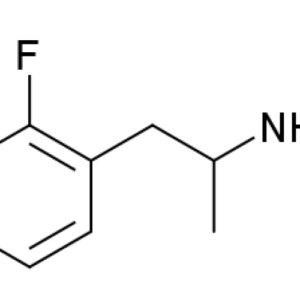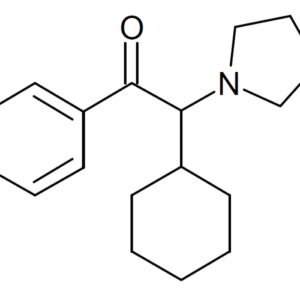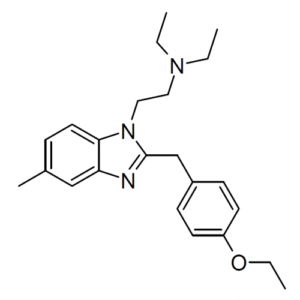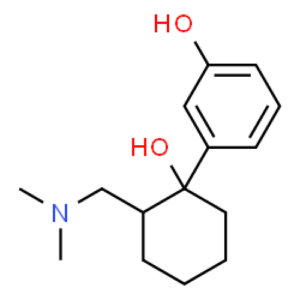Showing 1–16 of 17 results
-

$430.00 – $1,350.00
2-Fluoroamphetamine (2-FA) is a stimulant drug from the amphetamine family which has been sold as a designer drug. 2-Fluoroamphetamine differs from 3- and 4-fluoroamphetamine in the position of the fluorine atom on the aromatic ring, making them positional isomers of one another. The replacement of a hydrogen atom with a fluorine atom in certain compounds to facilitate passage through the blood–brain barrier, as is desirable in central nervous system pharmaceutical agents, is a common practice due to the corresponding increase in lipophilicity granted by this substitution.
-

$450.00 – $1,550.00
2-Fluoromethamphetamine (2-FMA) is a stimulant drug of the amphetamine family which has been used as a designer drug. 2-FMA is commonly compared to lisdexamfetamine (Vyvanse), and dextroamphetamine due to its efficacy as a study or productivity aid.[citation needed] 2-FMA is purported to produce somewhat less euphoria than comparable amphetamines, likely due to its main mechanism of action consisting of norepinephrine reuptake inhibition.
-

$525.00 – $1,790.00
Bucinnazine (AP-237, 1-butyryl-4-cinnamylpiperazine) is an opioid analgesic drug that was widely used in China to treat pain in cancer patients as of 1986. It is one of the most potent compounds among a series of piperazine-amides first synthesized and reported in Japan in the 1970s. Bucinnazine has analgesic potency comparable to that of morphine but with a relatively higher therapeutic index.
-

$450.00 – $1,550.00
3-Fluoroethamphetamine (3-FEA) is a stimulant drug of the amphetamine class which acts as a releasing agent of the monoamine neurotransmitters norepinephrine, dopamine and serotonin. Compared to the unsubstituted ethylamphetamine, 3-fluoroethamphetamine is a weaker releaser of noradrenaline, but a stronger releaser of both dopamine and serotonin, and produced the strongest reinforcing effects in animal studies out of a range of 3-substituted ethamphetamine derivatives tested, despite not being the most potent dopamine releaser
-

$450.00 – $1,650.00
4-Fluoromethamphetamine (4-FMA) is a stimulant drug related to methamphetamine and 4-fluoroamphetamine. It has been reported to be sold as a designer drug, but little is known about its pharmacology or toxicology. It was first detected from legal highs sold in Japan in 2006 and became illegal to sell or to possess for the purpose of distribution (although not to simply possess for personal use) in Japan in 2008. It was initially reported to be contained as an ingredient in some of the range of party pills sold internationally by the Israeli company Neorganics from around 2006 onwards, but this was later shown to be incorrect and this ingredient was eventually identified as the closely related compound 2-fluoromethamphetamine.
-

$360.00 – $950.00
α-PCyP is a stimulant drug of the cathinone class that has been sold online as a designer drug. In a series of alpha-substituted pyrrolidinyl cathinone derivatives developed in 2015, the alpha-cyclopentyl derivative was found to have around the same potency in vitro as an inhibitor of the dopamine transporter as the alpha-propyl derivative α-PVP, while the alpha-cyclohexyl derivative α-PCyP was around twice as strong.
-

$325.00 – $950.00
α-PHiP (also known as α-PiHP) is a stimulant drug of the cathinone class that has been sold online as a designer drug. It is a positional isomer of pyrovalerone, with the methyl group shifted from the 4-position of the aromatic ring to the 4-position of the acyl chain. In a classic 2006 study of pyrrolidinyl cathinone derivatives by Meltzer et al. at Organix, the alpha-isobutyl derivative of pyrovalerone, O-2494, was found to have the highest potency in vitro as an inhibitor of the dopamine transporter of the alpha substituted derivatives tested; however, it was not until ten years later in July 2016 that α-PHiP was first identified as a designer drug, when it was reported to the EMCDDA by a forensic laboratory in Slovenia.
-

$360.00 – $1,150.00
Deoxymethoxetamine (3′-methyl-2-oxo-PCE, DMXE, 3D-MXE) is a recreational designer drug from the arylcyclohexylamine family, with dissociative effects. It is an analogue of methoxetamine where the 3-methoxy group has been replaced by methyl. It has been sold online since around October 2020, and was first definitively identified by a forensic laboratory in Denmark in February 2021.
-

$475.00 – $1,250.00
Etomethazene (5-methyldesnitroetonitazene) is a benzimidazole derivative with opioid effects which has been sold as a designer drug over the internet since early 2022. It is an analogue of etonitazene where the nitro (NO2) group has been replaced by a methyl (CH3) group. While formal studies into its pharmacology have yet to be carried out, it showed far less potency than etonitazene itself. Etomethazene has a potency around 20 times than morphine with a relatively short duration about 120 min.
-

$290.00 – $850.00
JWH-018 Potent Sheets Finally at an Affordable Price! These Slide Right Through the Mail and Examinations when Sending to Bad Boy! Color is Excellent! Each sheet contains 3 grams! 1 hit is like smoking an entire blunt straight to the dome!!
-

$325.00 – $990.00
MDPHP (3′,4′-Methylenedioxy-α-pyrrolidinohexiophenone) is a stimulant of the cathinone class originally developed in the 1960s, which has been reported as a novel designer drug. In the UK its slang name is monkey dust. It is closely related to the potent stimulant MDPV though with slightly milder effects, and has been used as an alternative in some countries following the banning of MDPV
-


$375.00 – $790.00
SR-17018 is a drug which acts as a biased agonist at the μ-opioid receptor, selective for activation of the G-protein signalling pathway over β-arrestin 2 recruitment. In animal studies it produces analgesic effects but with less respiratory depression and development of tolerance than conventional opioids.
-

$370.00 – $1,050.00
Metonitazene is an analgesic compound related to etonitazene, which was first reported in 1957, and has been shown to have approximately 1000 times the potency of morphine by central routes of administration, but if used orally it has been shown to have approximately 10 times the potency of morphine.
Its effects are similar to other opioids such as fentanyl and heroin, including analgesia, euphoria, and sleepiness. Adverse effects include vomiting, and respiratory depression that can potentially be fatal. Because of high dependency potential and dangerous adverse effects it has never been introduced into pharmacotherapy. It is instead commonly used in the illicit manufacture of counterfeit-OxyContin opioid pills.
-

$490.00 – $1,500.00
Desmetramadol (INNTooltip International Nonproprietary Name), also known as O-desmethyltramadol (O-DSMT), is an opioid analgesic and the main active metabolite of tramadol. Tramadol is demethylated by the liver enzyme CYP2D6 to desmetramadol in the same way as codeine, and so similarly to the variation in effects seen with codeine, individuals who have a less active form of CYP2D6 will tend to have reduced analgesic effects from tramadol.
-

$390.00 – $850.00
O-Desmethyltramadol (O-DSMT, desmetramadol) is an opioid analgesic and an active metabolite which is produced in the liver after the consumption of tramadol. It has little to no history of human usage but is easily accessible through the use of certain online research chemical vendors.
-

$475.00 – $1,350.00
Protonitazene is a benzimidazole derivative with potent opioid effects which has been sold over the internet as a designer drug since 2019, and has been identified in various European countries, as well as Canada, the USA and Australia. It has been linked to numerous cases of drug overdose, and is a Schedule I drug in the USA.
It was developed by a Swiss pharmaceutical company in the 1950s as an alternative to morphine, but was never adopted due to severe side effects

















